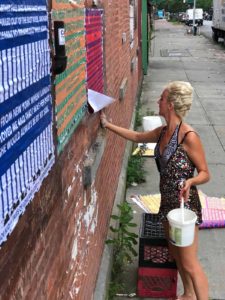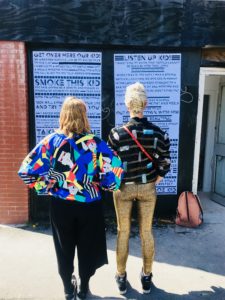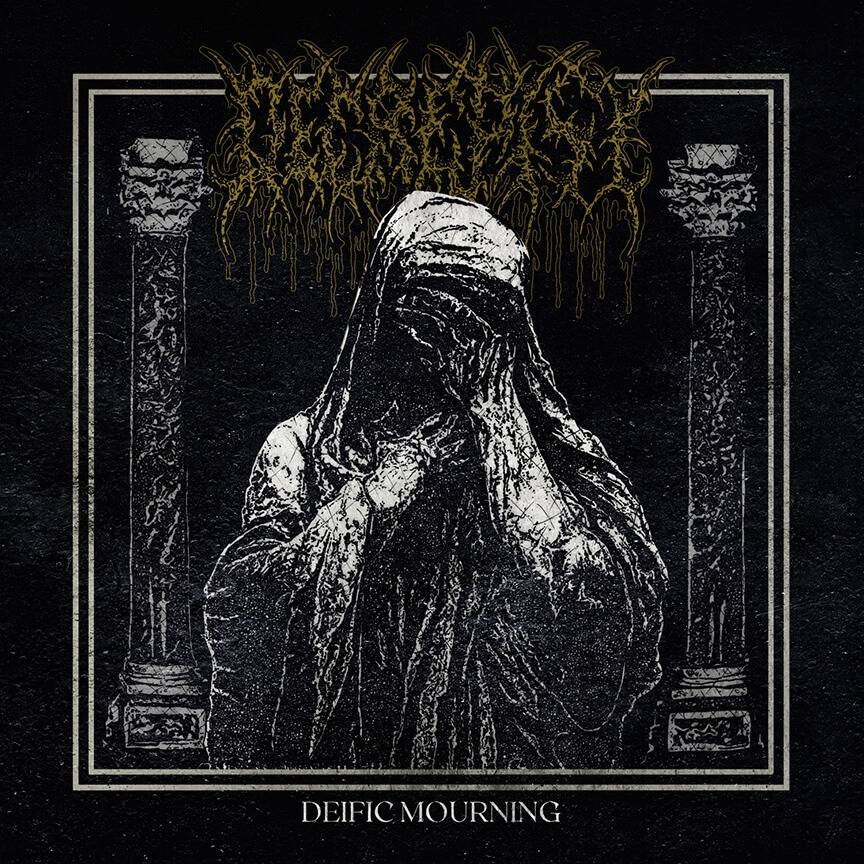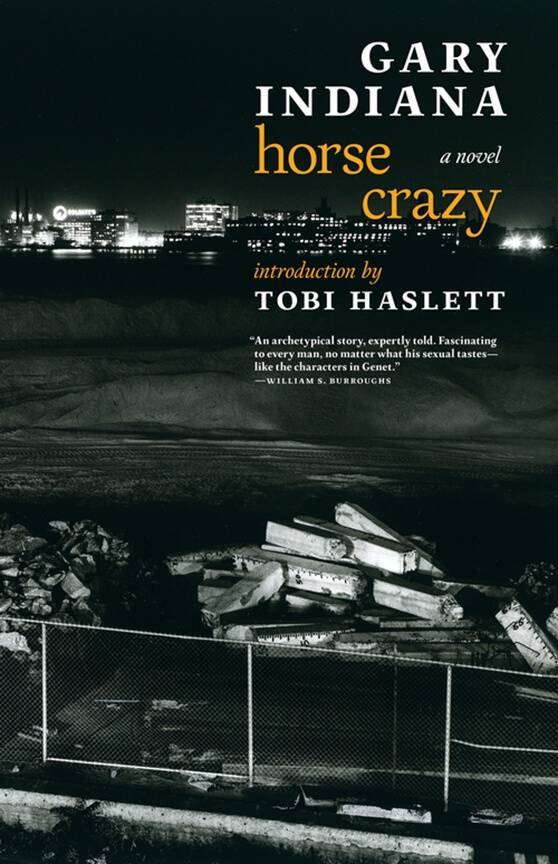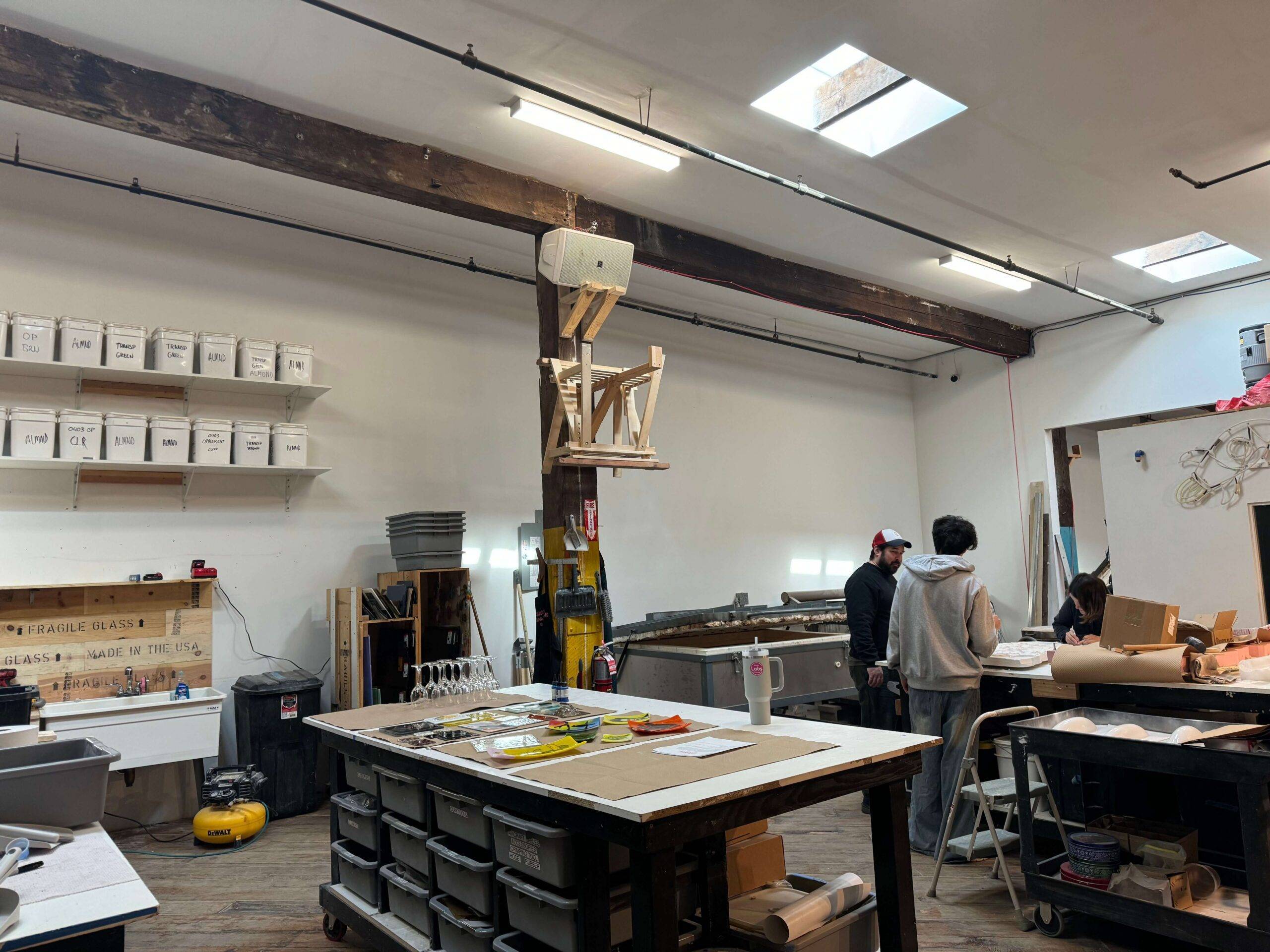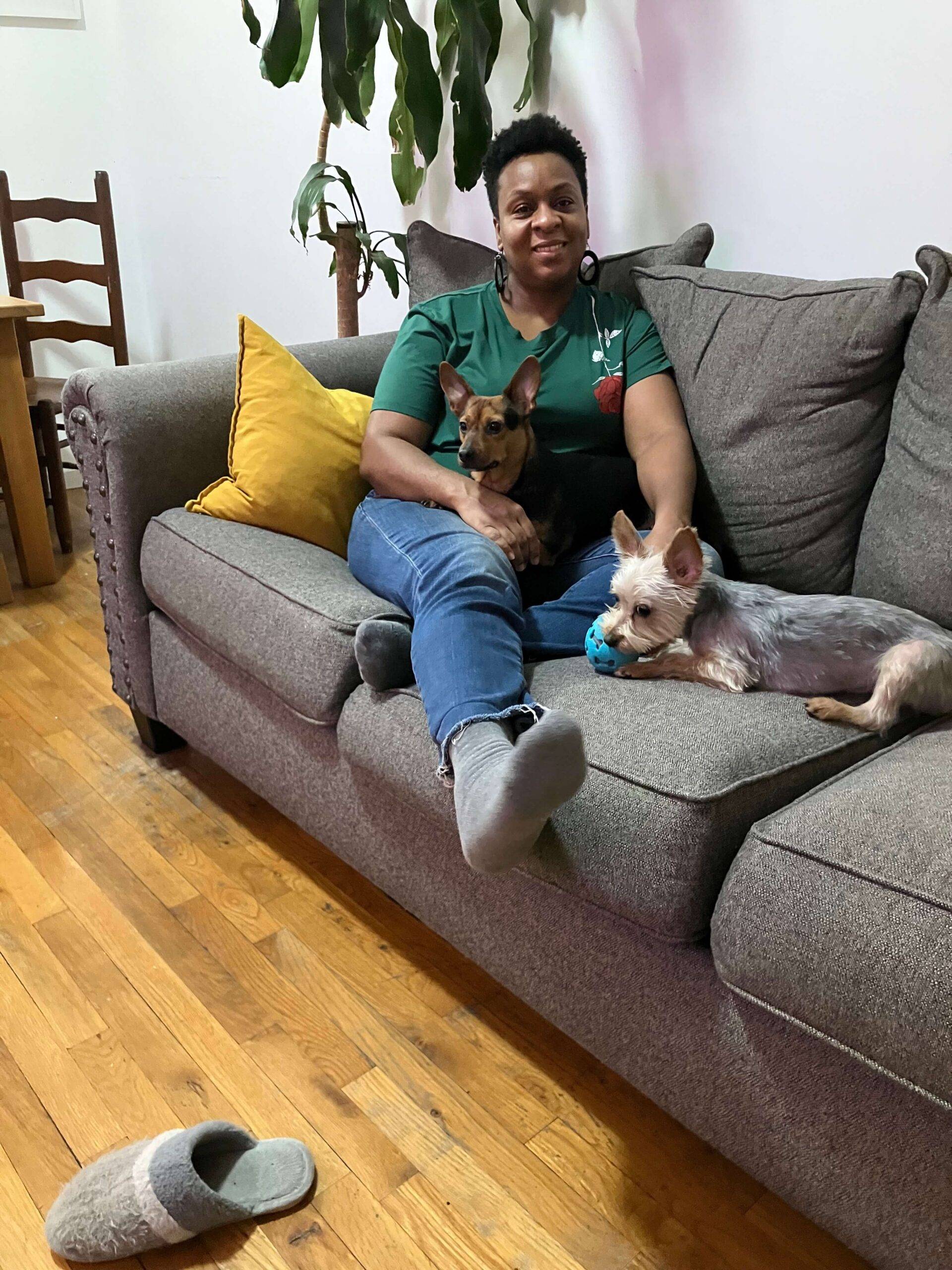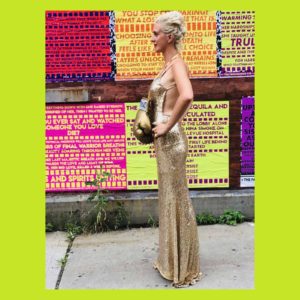
If you see a woman walking around in a shimmering gold dress the next couple of weeks, it’s probably the English graphic designer Fandangoe Kid (Annie Nicholson). We caught up with Nicholson after her trip to Coney Island, which, in her words, “is so weird I fucking love it.” She’s in Red Hook for a residency at De-Construkt on 41 Seabring Street through August 14. Nicholson’s posters of positive messages are on De-Construckt’s exterior walls, as well as the walls of Open Source Gowanus (234 Butler St ).
Fandangoe Kid, who lives and volunteers in East London, places a premium on accessibility. “I want to appeal to people who may usually walk past a gallery. I want those who don’t feel like they have a place in the gallery to access my work.”
From a working class background, Fandangoe Kid continues to look at class disparities and art’s role in widening or closing those gaps. As a graphic design student at London College of Communication, the works of Jenny Holzer, Barbara Kruger, Tracey Emin broke her assumptions of art’s limitations.
“I kept thinking, fuck ya, you can make work out of your innermost workings,” Fandangoe Kid said. “It all was incredibly bold.”
Posters appeal to Fandangoe Kid for their loud proclamations of self. Like her influences, all of her work draws upon her deepest emotional realities.
“(As an artist) you need to make work that can be accessed on a broad level without being vacuous,” Fandangoe Kid added. “It has to have the anecdotal thread of whatever your life history was.”
Tragedy struck Nicholson in 2011, when almost all of her family passed in New York. She processed the trauma by turning to art, and encouraging others to realize that “beautiful things can happen on a micro level within macro level of trauma.” Of the following years after her family’s passing, she said, “If you survive that you’re absolutely forced to face yourself. You have to work really hard to understand yourself and live with happiness at the other side. Creating and making art has become an immense source of life for me.”
About the process of applying posters with positive messages to the exterior walls of Open Source, Nicholson said, “with this project, it’s so personal, there’s a feeling of shedding layers. I regained some of the years I lost back then.”
Check out Fandangoe Kid’s work at 41 Seabring St (De-Construkt), Corner of Bergen, and 4th Ave, 234 Butler St (Open Source Gowanus)


